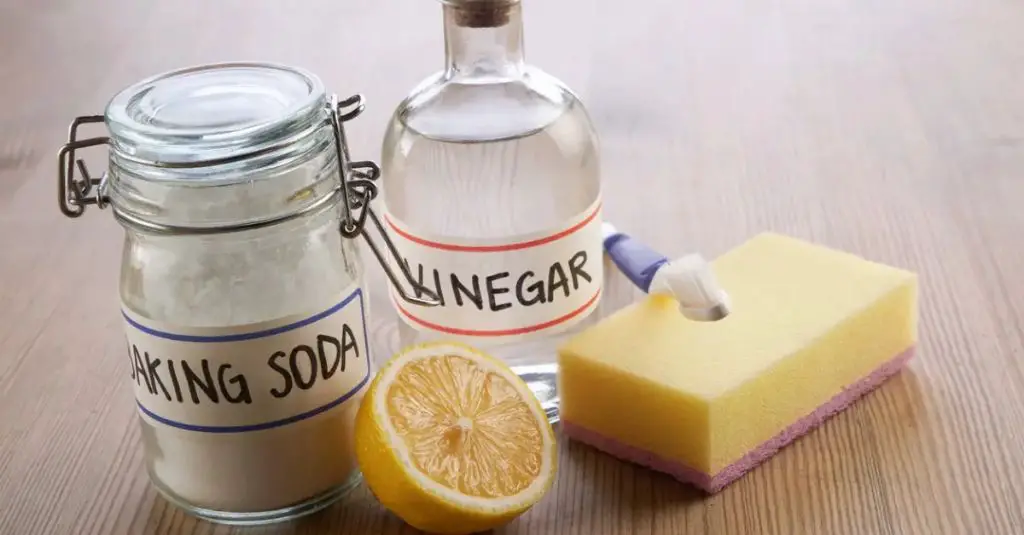Vinegar is a common household product used for cooking, cleaning, and more. There are many types of vinegar available, including white vinegar, apple cider vinegar, red wine vinegar, rice vinegar, and more. In recent years, a product called “cleaning vinegar” has become popular. But is cleaning vinegar the same as regular white vinegar? Let’s take a closer look.
Page Contents
What is White Vinegar?
White vinegar, sometimes also called distilled vinegar, is made through the fermentation of ethanol. Ethanol is converted to acetic acid and water by acetic acid bacteria, resulting in vinegar. White vinegar typically contains 4-7% acetic acid.
The most common use of white vinegar is pickling and food preservation. The acetic acid acts as a preservative and gives pickled foods a sour taste. White vinegar is also popularly used for cleaning purposes. The acidic nature helps dissolve mineral deposits, remove grease, and disinfect surfaces. It has a strong, pungent odor thanks to the acetic acid.
What is Cleaning Vinegar?
Cleaning vinegar refers to a vinegar product that is designed and marketed specifically for household cleaning uses. It is typically white vinegar that has been diluted with water to have an acetic acid content of 3-6%. Some brands may also add other ingredients like scents, surfactants, or colorants.
The term “cleaning vinegar” is primarily a marketing term used to differentiate it from food-grade white vinegar. While regular white vinegar can be used for cleaning, cleaning vinegar is advertised as a cleaning-specific product. It is usually packaged in spray bottles or other containers meant for easy cleaning access.
Acetic Acid Content
The main difference between white vinegar and cleaning vinegar is the amount of acetic acid they contain. White vinegar has an acetic acid content of 4-7%, while cleaning vinegar is diluted to 3-6%. The dilution makes cleaning vinegar have a less potent smell and milder acidity.
Here’s a comparison of the acetic acid content:
| Vinegar Type | Acetic Acid Content |
|---|---|
| White Vinegar | 4-7% |
| Cleaning Vinegar | 3-6% |
The higher acetic acid content of white vinegar makes it more effective for disinfecting and removing stubborn stains. Diluted cleaning vinegar may require more applications or scrubbing to get the same cleaning results.
Safety and Uses
Cleaning vinegar, like white vinegar, is safe to use on most surfaces. It’s non-toxic and environmentally friendly. However, you should avoid using vinegar products on stone surfaces like marble or granite. The acidity can damage the stone over time.
Here are some popular uses for both white vinegar and cleaning vinegar:
- Removing stains and disinfecting surfaces
- Cleaning windows and glass
- Descaling appliances and removing mineral deposits
- Cleaning and deodorizing carpets
- Unclogging drains
- Removing soap scum and hard water stains
White vinegar is more commonly used for DIY pickling, weed control, fabric softening, and other household purposes thanks to its higher acidity. Cleaning vinegar can be used interchangeably with white vinegar for most cleaning scenarios, you may just need more applications.
Cost Comparison
White vinegar tends to be cheaper than cleaning vinegar. A gallon of typical white vinegar costs around $2-3. Meanwhile, a 32 oz bottle of cleaning vinegar can cost $4-6.
Here’s a cost comparison per ounce of acetic acid content:
| Vinegar | Price | Acetic Acid Content | Price per Ounce of Acetic Acid |
|---|---|---|---|
| White Vinegar | $2.50 per gallon (128 oz) | 5% (6.4 oz acetic acid per gallon) | $0.39 per oz |
| Cleaning Vinegar | $4 per 32 oz | 6% (1.92 oz acetic acid per 32 oz) | $2.08 per oz |
Based on average prices, white vinegar provides more acetic acid cleaning power per dollar spent. Opting for cleaning vinegar means paying a premium for the convenience of the packaging.
Which is Better for Cleaning?
For most household cleaning tasks, white vinegar and cleaning vinegar can be used interchangeably. White vinegar is more cost effective and provides more concentrated acetic acid for cutting through tough grease and grime.
However, cleaning vinegar may be preferred when you need a less pungent vinegar smell during cleaning. The diluted acidity also makes it gentler on surfaces. It can be easier to apply directly on surfaces without dilution thanks to the spray bottle packaging.
Vinegar is biodegradable and much less toxic than many commercial cleaning chemicals. Whether you opt for white vinegar or cleaning vinegar, you can’t go wrong incorporating vinegar into your natural cleaning routine.
Conclusion
While cleaning vinegar is marketed specifically as a household cleaning product, it is fundamentally just diluted white vinegar. The main difference is a lower acetic acid content of 3-6% compared to 4-7% in white vinegar.
Cleaning vinegar offers convenience with its packaging and weaker odor. However, white vinegar has more cleaning power per ounce and is significantly cheaper. When it comes to green cleaning, you can substitute cleaning vinegar 1:1 for any white vinegar uses.
Vinegar is an effective eco-friendly cleaner for most hard surfaces. With its antibacterial properties and acidity for cutting grease, vinegar can keep your home sparkling clean. Opt for white vinegar to maximize value or cleaning vinegar for a milder product in a spray bottle format.
Either type of vinegar will make an excellent addition to your non-toxic cleaning routine. Use vinegar to create homemade cleaners by adding other natural ingredients like lemon juice, Castile soap, baking soda, or essential oils. With vinegar’s cleaning power and versatility, you may be able to skip many harsh commercial cleaners.
